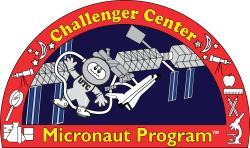Micronaut Program
UTC media

Grades K-2
The Micronaut Mission takes place in the International Space Station training room. Scientists, engineers and mathematicians will be engaged in a variety of hands on experiments as they simulate traveling 230 miles above the Earth’s surface.
1 hour Micronaut Program - $400
- Includes Micronaut Mission and one Micronaut EVA of your choice.
- Maximum is 40 participants —Divided into 2 groups up to 20 students each.
2 hour Micronaut Program - $500
- Includes Micronaut Mission, and two Micronaut EVAs of your choice.
- Maximum is 60 participants —Divided into 3 groups up to 20 students each.
3 hour Micronaut Program - $600
- Includes Micronaut Mission, and three Micronaut EVAs of your choice.
- Maximum is 80 participants —Divided into 4 groups up to 20 students each.
Mission Packet including Activities
Micronaut EVAs
Micronaut in Orbit
- Students learn about a space shuttle launch - from liftoff, to docking with the International Space Station, to landing.
- Students work in pairs to put shuttle launch sequence cards in order based on what they learned.
- Students will create a paper model of a shuttle.
- If time allows, students will learn about an astronaut's daily routine in space.
Nanosatellite
- Students will learn about the uses of Nanosatellites in space.
- Students will work in pairs to build a Nanosatellite with Geofix pieces.
- If time allows, students will investigate different components of the day and night sky.
Micronaut to the Moon
- Students will learn how rockets take astronauts to the Moon and back - from liftoff to landing.
- Students will work in pairs to put sequence cards in order based on what they learned.
- Students will count and identify different shapes and use those tangram shapes to construct a paper rocket.
Planet Walk
- Students will learn important facts and characteristics of the planets in our Solar System.
- Students will learn the relative size and distance of the planets.
- Students will learn and practice putting the planets in order from the Sun.
Stars and Constellations
- Students will learn important facts and characteristics of stars.
- Students will learn important facts about constellations.
- Students will create their own constellation.
Telescope Tech
- Students will explore the concepts of reflection and refraction and discuss their differences.
- Students will learn the different parts of a telescope.
- Students will use a refracting telescope to observe distant objects.
Moon Phases
- Students will investigate the sun, earth, moon and their interactions with each other.
- Students will learn the four main moon phases and will model and discuss each phase.
MicroRockets
- Students will build and launch a MicroRocket.
- Students will organizer launch results using a bar graph.
- Students will read and interpret the results using a bar graph.